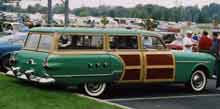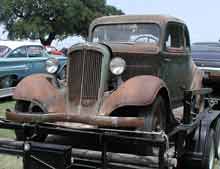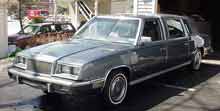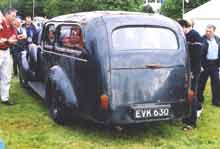Packin' it In
Packard station wagon? Did Packard build station wagons? Well, of course Packard built station wagons. Prior to World War II there were wood-bodied wagons in both the One-Ten and One-Twenty lines, and who could forget the stylish 1948 Station Sedan, though it was more of a half-timbered affair. In the twilight years, 1957 and 1958, there were also station wagons, though these were more Studebaker than Packard.
The car above notwithstanding, Packard Motor Car Company omitted any form of wagon from its 1951 to '56 catalogs. Perhaps the company brass felt they didn't need one. Packard's new "low-to-the-road styling" for 1951 included copious luggage space in its sedan configuration, nearly 90 percent more commodious than that of the 1948-50 "Pregnant Elephant" models. If that wasn't enough, the entry-level 200 series included a Business Coupe, basically a two door sedan with no back seat. When combined with the already-huge sedan trunk, the carrying capacity was mammoth. Apparently, it wasn't needed either, as the Business Coupe was gone by the time the '52s appeared.
But what of this unusual Packard wagon, part of The Auction at Hershey 2004? It's striking, but the lines are more abrupt than you'd expect, either from the factory or one of the custom shops like Coachcraft or Bohman & Schwartz. Its workmanship wasn't up to coachbuilder standards, either. At first I thought it was a cut-and-applique job on a 1951 Patrician sedan, but if so the rear door configuration has been significantly altered.
Packard is blessed with a populous partisanship. There are two major clubs, Packard Automobile Classics and Packards International, and two museums, the National Packard Museum and America's Packard Museum. Does anyone know the history of this interesting wagon?




